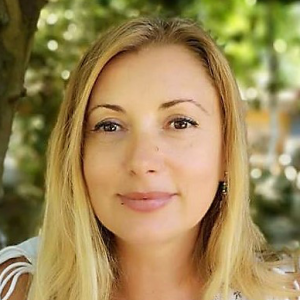Dr Tijen Tunali

Établissement d'origine
Laboratoire d'accueil
CITERES (CItés, TERritoires, Environnement, Sociétés), CNRS / University of Tours - FR
Hôte scientifique
Dr Gülçin Erdi Lelandais
PROJET
L'art et la ville: espace urbain, art et mouvements sociaux
La prolifération des pratiques visuelles, des engagements et des tactiques dans les rues et les places des villes relie l'art aux constitutions politiques des luttes locales d'une part, et à la politique par en bas des mouvements sociaux, d'autre part. Ce projet étudie les idéologies, les relations, les significations et les pratiques qui découlent des diverses interactions entre les trois sphères: l'espace urbain, l'art et les mouvements sociaux. D'une manière novatrice et multidisciplinaire, il aborde la question pressante des sciences humaines et sociales: comment l'art, en tant que forme culturelle, participe-t-il aux transformations urbaines contemporaines et aux luttes sociopolitiques?
La dimension esthétique dans la politique et la dimension politique dans l'art coïncident dans le terrain contesté de l'espace public urbain. Ce projet ne répète pas des questions exhaustives par exemple si l'art contemporain peut être un moteur du changement social ou combien il est impliqué dans la politique. Au lieu de cela, il analyse comment l'art a fusionné avec de nouvelles formations politiques et est devenu une partie vitale de la constitution d'une nouvelle compréhension de la participation politique. Il s'engage davantage dans les pouvoirs critiques, esthétiques, communicatifs et créatifs de l'art du point de vue de la mobilisation sociale et de la création de biens communs politiques.
La portée féconde de ce projet est dans son approche multi-perspective de réunir trois dimensions différentes au carrefour de l'art, de l'espace urbain et des mouvements sociaux: «art et transformation néolibérale de l’urbaine», «interventions artistiques urbaines» et «art dans les mouvements sociaux». La contribution que le projet entend apporter à l'état de l'art est sa capacité à rassembler les théories et les discussions sur le double rôle de l'art dans la planification urbaine et la résistance collective : sa fonction débattue comme intervention esthétique dans l'espace public et sa place envisagée dans les mouvements sociaux urbains.
Publications
Final reports
The proliferation of visual practices, engagements, and tactics on the streets and plazas of the cities connect art to the political constitution of local struggles on the one hand, and the global grassroots politics of the social movements, on the other. This project investigates the ideologies, relationships, meanings and practices that arise from the diverse interactions among the three social spheres: urban space, art, and social movements. In an innovative and multidisciplinary fashion, it addresses the pressing question in humanities and social sciences : How does art, as a cultural form, partake in contemporary urban transformations and social struggle ?
The aesthetic dimension in the political and the political dimension in art coincide in the contested terrain of the urban public space. This proposed project does not repeat the exhausted questions, such as whether contemporary art can be an impetus for social change or how much it is involved in politics. Instead, it analyzes how art merges with new political formations and becomes a vital part of the constitution of a new understanding of political participation. It further engages in art’s critical, aesthetic, dialogical, communicative and creative powers from the perspective of social mobilization and creation of political commons.
The prolific significance of this project is in its multi-perspective approach to bring together three different dimensions in the intersection of art, urban space and social movements: “art and neoliberal urban transformation,” “urban art interventions” and “art in social movements.” The contribution that the project intends to make for state of the art is its ability to bring together the theories and discussions on art’s twofold role in urban planning and collective resistance, its debated function as an aesthetic intervention in the public space and its envisaged place in urban social movements.
The proliferation of visual practices, engagements, and tactics on the streets and plazas of the cities connect art to the political constitution of local struggles on the one hand, and the global grassroots politics of the social movements, on the other. This project investigates the ideologies, relationships, meanings and practices that arise from the diverse interactions among the three social spheres: urban space, art, and social movements. In an innovative and multidisciplinary fashion, it addresses the pressing question in humanities and social sciences : How does art, as a cultural form, partake in contemporary urban transformations and social struggle ?
The aesthetic dimension in the political and the political dimension in art coincide in the contested terrain of the urban public space. This proposed project does not repeat the exhausted questions, such as whether contemporary art can be an impetus for social change or how much it is involved in politics. Instead, it analyzes how art merges with new political formations and becomes a vital part of the constitution of a new understanding of political participation. It further engages in art’s critical, aesthetic, dialogical, communicative and creative powers from the perspective of social mobilization and creation of political commons.
The prolific significance of this project is in its multi-perspective approach to bring together three different dimensions in the intersection of art, urban space and social movements: “art and neoliberal urban transformation,” “urban art interventions” and “art in social movements.” The contribution that the project intends to make for state of the art is its ability to bring together the theories and discussions on art’s twofold role in urban planning and collective resistance, its debated function as an aesthetic intervention in the public space and its envisaged place in urban social movements.


